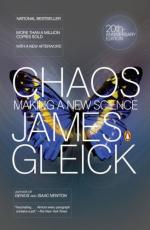
|
| Name: _________________________ | Period: ___________________ |
This quiz consists of 5 multiple choice and 5 short answer questions through chapters 7-8.
Multiple Choice Questions
1. What refers to the static or animated 2-D or 3-D visual representation of information about software systems based on their structure, size, history or behavior?
(a) Fractal compression.
(b) Software metric.
(c) Cosmic arrhythmias.
(d) Software visualization.
2. In Chapter 1, "The Butterfly Effect," the author writes, "The Butterfly Effect acquired a technical name: sensitive dependence on _____________"?
(a) "Random conditions."
(b) "Ideal conditions."
(c) "Initial conditions."
(d) "Controlled conditions."
3. What refers to a supercomputer manufacturer based in Seattle, Washington, and founded in 1972?
(a) Cray.
(b) Bend.
(c) Ting.
(d) More.
4. Albert Libchaber made the first experimental observation of the _____ that leads to chaos and turbulence in convective Rayleigh-Benard systems.
(a) Poincare conjecture.
(b) Bifurcation cascade.
(c) Fractal basin boundaries.
(d) No-slip condition.
5. What did Foucault use as a way to demonstrate the earth's rotation, according to the author in Chapter 2, "Revolution"?
(a) A six-foot wide magnifying glass.
(b) A softball.
(c) A turkey baster.
(d) A twenty-story high pendulum.
Short Answer Questions
1. What controversial book did Thomas S. Kuhn publish in 1962?
2. In mathematics and statistics, a _____ is a quantity that serves to relate functions and variables using a common variable when such a relationship would be difficult to explicate with an equation.
3. What is the study of general and fundamental problems, such as those connected with existence, knowledge, values, reason, mind, and language?
4. With whom did Harry Swinney perform experiments on the onset of turbulence for water in rotating cylinders?
5. Although James Yorke was a brilliant mathematician, he often referred to himself as what?
|
This section contains 270 words (approx. 1 page at 300 words per page) |

|




